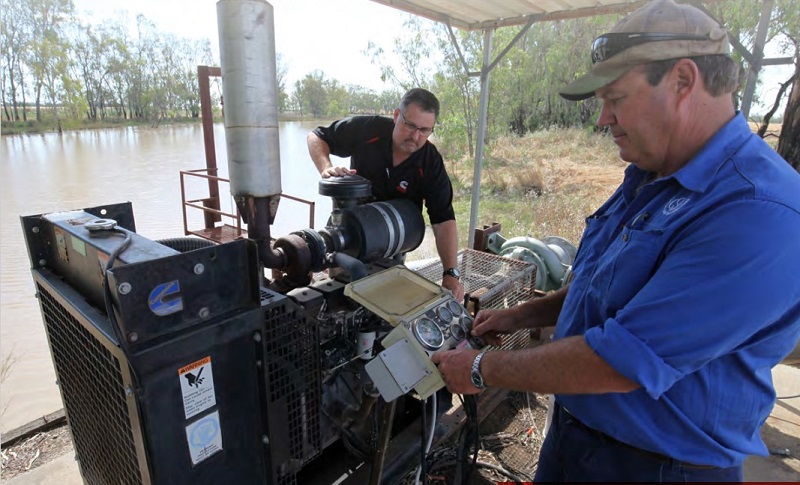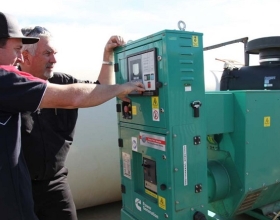Cotton Seed Distributor chooses Cummins' reliable engines for pumping

Australia’s only cotton seed supplier, Cotton Seed Distributors (CSD) has partnered with the CSIRO for a number of years developing improved cotton varieties for the domestic and international markets.
Australian cotton is considered the best in the world for quality and yield. In fact, Australian growers using CSD-CSIRO varieties enjoy yields three times the world average and more than twice that of the US, which is Australia’s nearest competitor.
Under a joint venture agreement, CSD and the CSIRO have invested more than $70 million in cotton breeding and research since 2007. By 2024 this investment will have exceeded $140m in total.
The key challenge now for CSD, is providing varieties to meet the demands of the burgeoning cotton industry. New varieties take up to 13 years to bring to market.
CSD undertakes early stage seed multiplication, as well as some of its research and development, on ‘CSD Farms’, an amalgamation of three properties located between Narrabri and Wee Waa in north west NSW. CSD also supports R&D undertaken by the CSIRO and several of its other commercial partners on is farming asset of 1,170 hectares, 620 hectares of which are irrigated.
Cummins in the engine of choice for pumping
Fifteen Cummins engines, set up as self-contained powerpacks and designed and built by Cummins in Australia, are performing various pumping duties at CSD Farms as part of the irrigation system.
“Cummins is our engine of choice,” says CSD Farms manager Mark Cathcart. “We are operating several other engine brands as well but these will eventually be changed out for Cummins.”
The latest Cummins engines at CSD Farms are electronic Tier 3 QSB3.3 and QSB4.5 units and their fuel efficiency immediately became clear to Mark Cathcart.
The move to electronic engine control has allowed CSD to specify smaller, more fuel efficient engines that are doing exactly the same job as the larger, older generation mechanical units.
Smaller, more efficient engines trims fuel costs
For example, the 4.5-litre QSB rated at 160 hp is more fuel efficient than the larger, mechanical 5.9-litre 6BT rated at 150 hp, and also delivers higher torque at lower rpm – 460 lb ft at 1500 rpm versus 417 lb ft at 1600 rpm.
“The QSB4.5 is pumping 20 megalitres (20 million litres) a day out of storage into the main supply channel and is using only 10 litres an hour,” Mark Cathcart reveals. Importantly, the high-torque engine is operating as low as 1200 rpm which is in the ‘sweet spot’ and conducive to best fuel economy.

One of the key benefits of the electronic engine control is that instantaneous fuel consumption data is available as a digital readout on the operator interface panel, allowing the most fuel efficient revs to be set in relation to pumping demand.
“Anything that is available to help us improve fuel efficiency is important,” says Mark Cathcart.
Reliability and ease of service make Cummins the obvious choice
There are other reasons for the choice of Cummins. “As the varieties of the future for Australia’s growers are screened and produced on our farm, engine reliability along with ease of service and parts availability are critical,” says Mark Cathcart.
“Our oldest mechanical Cummins engines have done in excess of 10,000 hours and basically haven’t been touched apart from routine servicing.”
The QSB engines are set up as ComPak powerpacks which incorporate a cooling system that provides continuous full power operation in ambient temperatures up to 50°C.
